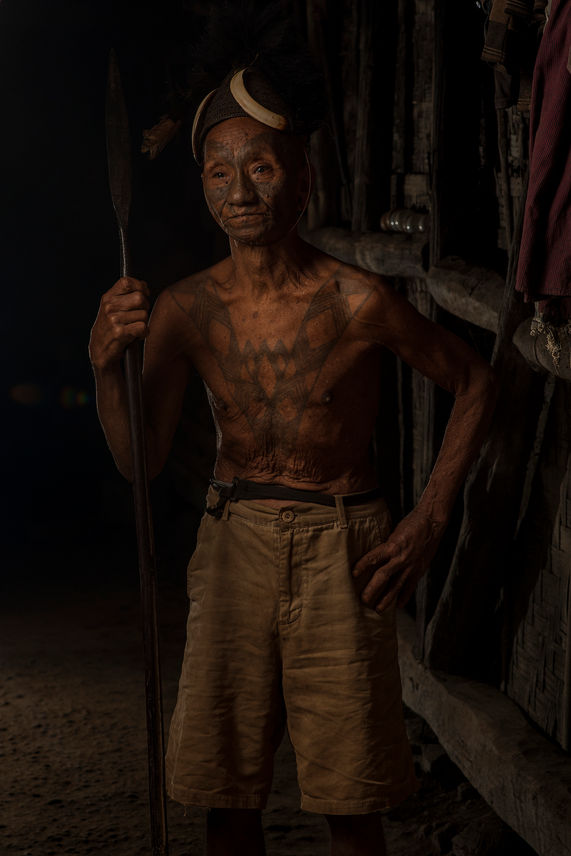KONYAK TRIBE, THE HEADHUNTERS OF NAGALAND
WRITTEN BY
Taylor Nam
LOCATION
Nagaland, India.
Title
Living Out Their Last Days As Legends from the Past
For generations upon generations, the Konyak Tribe of Nagaland, India had made headhunting not only a legitimate livelihood, but a rite of passage for young men in the past. Nagaland exists as a remote tribal state, nearly hidden among valleys and jungles, and home to diverse people groups located in Northeastern India. Now, the oldest generations are remembered by the visual marks of a tradition and way of life that has been banned. Yet the old men still bear the title with dignity. According to Konyak warrior Chopa, he expressed pride in his heritage by relating that the British successfully wiped out villages, but the Konyak remained strong to their physical and cultural roots: “We the Konyak are the most powerful. We stay here. We are dominant.”
The Konyak historically made a living through fighting in the tribal disputes over land and rivers. When a Konyak man participated in such a dispute, he would be awarded a chest tattoo. However, if he took an enemy’s head in war, he was awarded a coveted facial tattoo to celebrate the new status he held as headhunter. Chopa expressed, “In the olden days, whoever didn’t have tattoos was not a warrior and was not respected by anyone. If they had tattoos, they could get anything, anything they wanted.”
When the British Raj officially banned headhunting in 1935, succeeding generations of Konyak men started shunning the traditions of their ancestors (except for at least one land dispute in 1990 that involved taking the enemy’s head). Indeed, the scene of war has dramatically changed and, with it, the role, status and life goals of a Konyak warrior. Chopa emphasized this point by saying that the current wars are all about money, carried out by technology and advanced weaponry. Thus, in a machine-enabled war over money, the loyalty and passion that a warrior would feel towards protecting his homeland has been lost. Now, even if they did choose to fight, they would be fighting just for money and nothing else. As Chopa explained, the Konyak used to take pride in their wars. Now, war follows whatever path will win as much as possible and as quickly as possible.
Thus, thanks to the British ban on headhunting and to the changing scene of war in India, the oldest generation of Konyak are living out their days as legends from days past. Wanghu, another Konyak warrior, revealed that their way of life now appeals to him in comparison to the old headhunting days–less pressure, more comfort, plenty of time to rest.
Even though they continue to pass on other traditions to the younger men of the tribes, when the last tattooed Konyak warrior dies, their culture will change forever. In a vanishing act brought about by government, a movement towards modernity and the ever-changing collective identity, headhunting is no more for the Konyak.
Indeed, the Konyak headhunters may have been the most powerful in the region. They may have stayed strong against invasions, time and time again. But, in the end, time–as it does everywhere to everyone–will prove to win the ultimate war.








